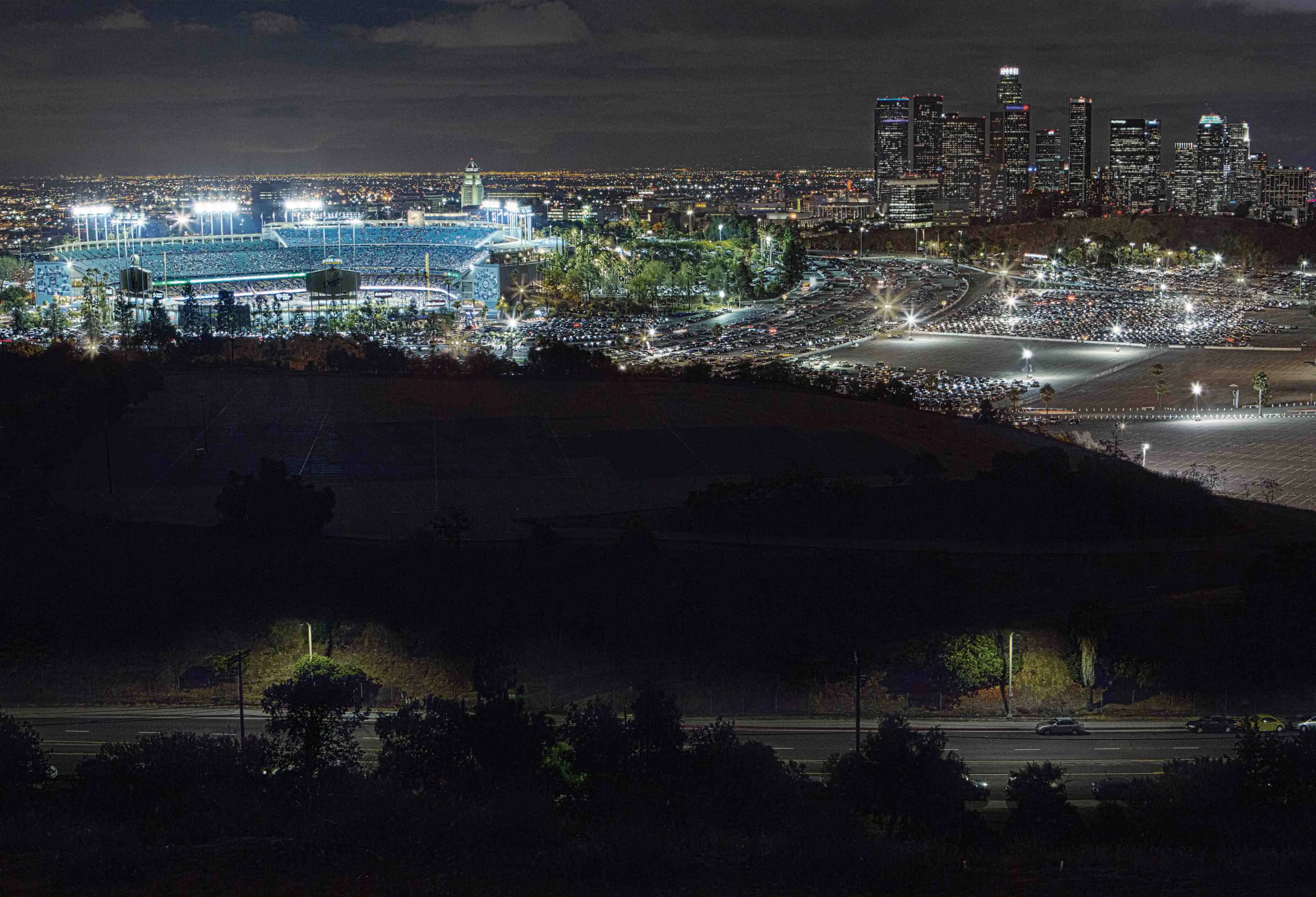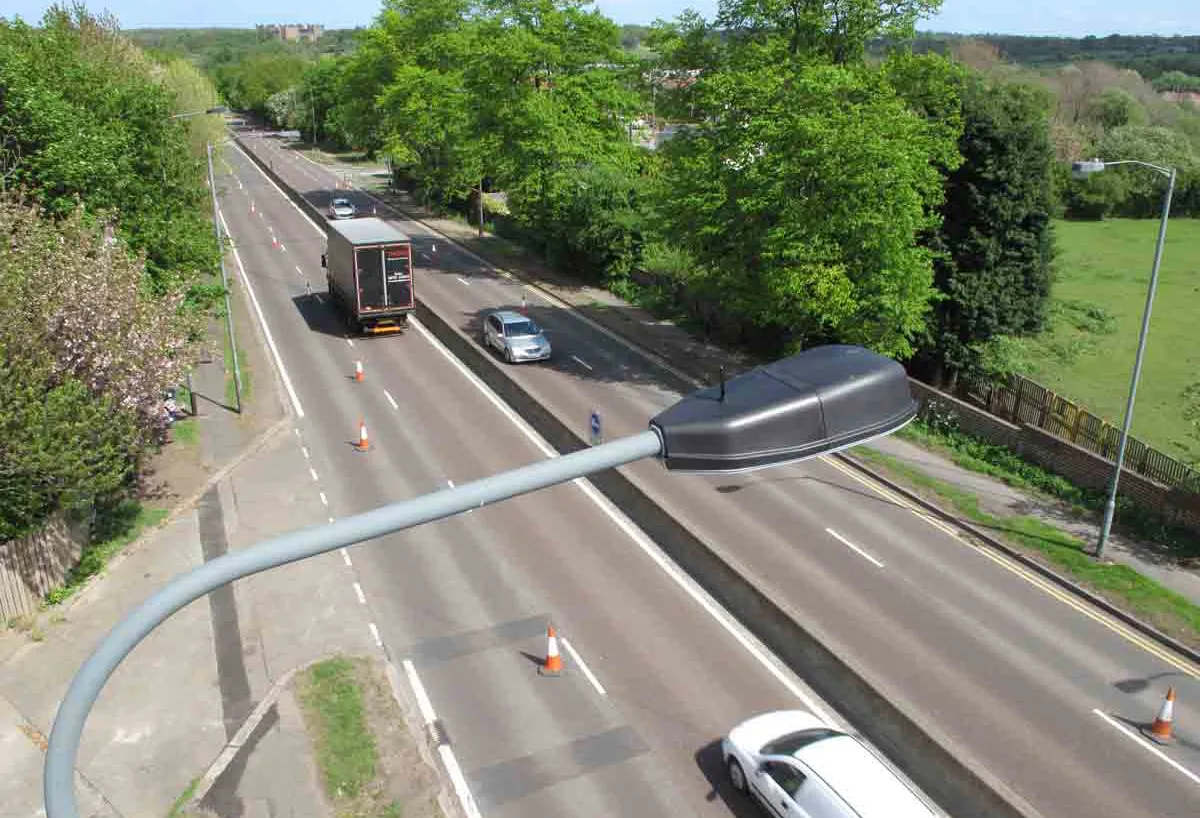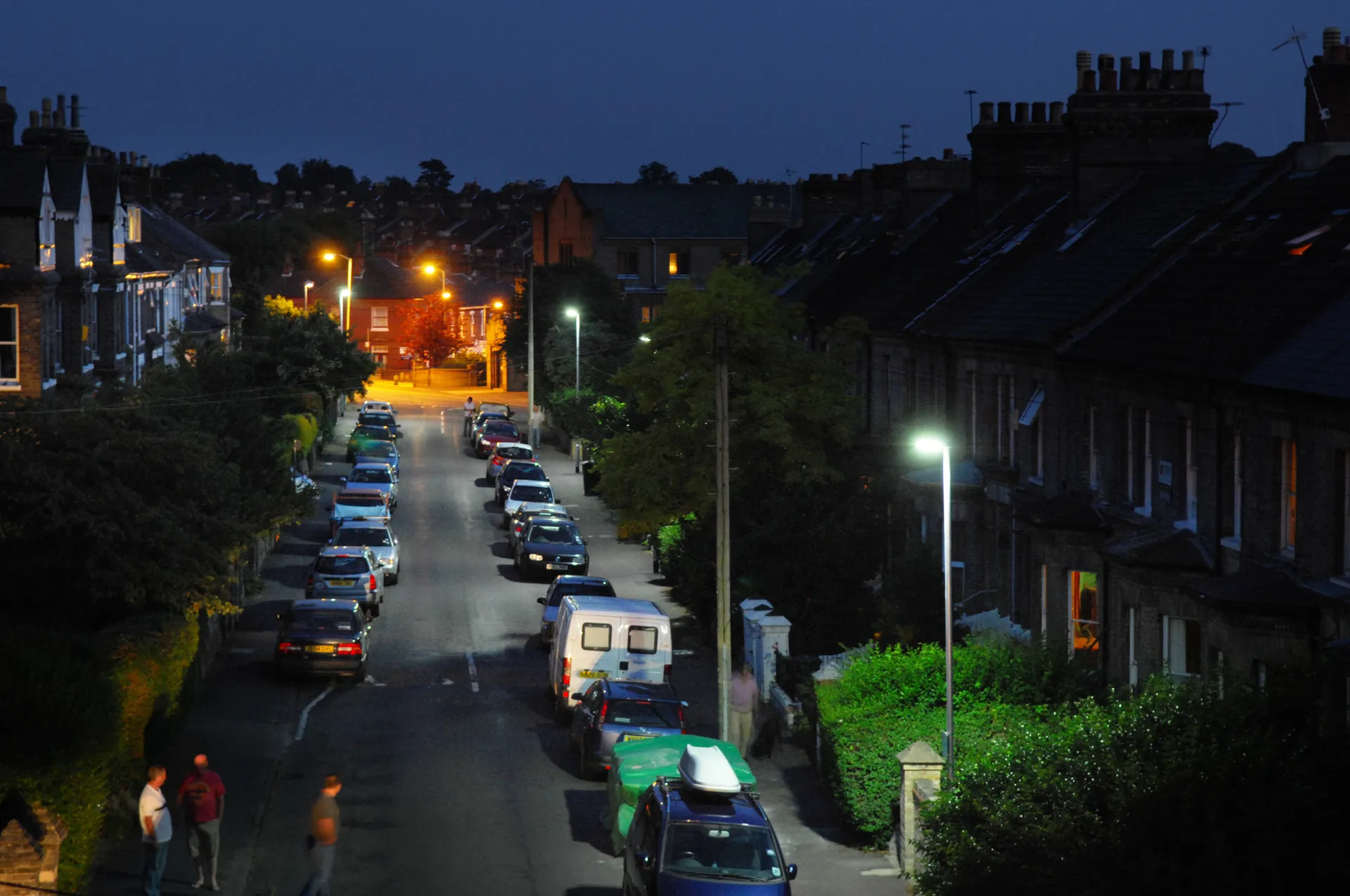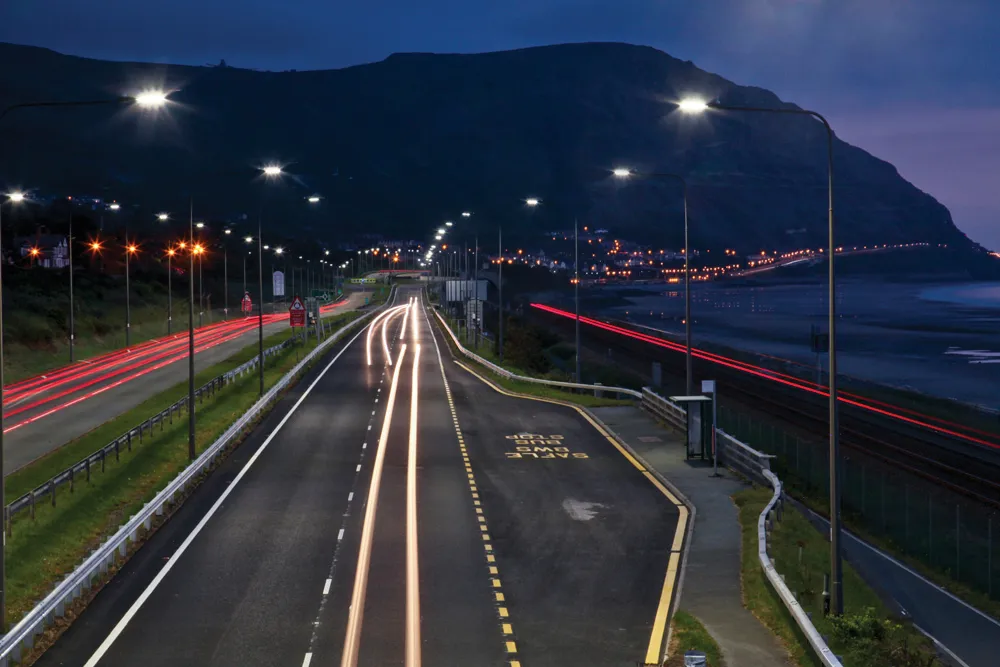As far as 99% of any city’s population is concerned, street lights are just, well, there. But big changes are taking place, as explained by lighting systems provider Philips Lighting. Street lighting has been with us for more than a century. With the exception of the early 20th century switchover from gas to electricity and the recent most important invention of LEDs, there have been few obvious changes.
December 20, 2016
Read time: 6 mins

RSSAs far as 99% of any city’s population is concerned, street lights are just, well, there. But big changes are taking place, as explained by lighting systems provider Philips Lighting
Street lighting has been with us for more than a century. With the exception of the early 20th century switchover from gas to electricity and the recent most important invention of LEDs, there have been few obvious changes.
But major change is now underway that should make a difference for 99% of the population. City services will be improved thanks to better lighting management systems; there will be light of better quality and more of it where needed. The urban population will see their city invest in solutions that strive to attain sustainability and that provide a more pleasant, safe and attractive city in the night as well as day.
Street lighting is rapidly being brought into the Internet of Things (IoT). New systems promise considerable savings of up to 60% because of LED and up to 80% with systems in place. Out-of-order street lights are repaired faster than previously – or even replaced before they fail with preventative maintenance.
At present, slightly under 12% of the world’s street lights use LEDs and just 2% are connected. However, these figures are anticipated to rise.8555 Philips Lighting has been operating at the interface of Lighting and IoT for several years and are experts in the field. That is proven by a vast customer base with more than 700 projects in 36 countries.
[CityTouch] is a web-based end-to-end street lighting management system. It enables remote and workflow management of individual or group of lights. CityTouch connects each individual street light via the existing cellular network, allowing the street lighting department to manage the lights remotely. During installation, the [CityTouch Ready luminaire] automatically connects to the system once installed like any other conventional luminaire. That commissioning process takes a few minutes and the operator can easily be connected to the luminaire and can start operating.
One advantage of the system, says Philips Lighting, is that CityTouch works with almost any luminaire, regardless of vendor or type. Operators are not locked in to using only a Philips luminaire.
Similarly, the system can work with multiple software systems. “Cities may have other systems“, says Peter Zink, global sub-segment manager for Roads and Streets with Philips Lighting. Philips CityTouch has application programming interfaces (APIs) with other systems to exchange data and commands. [Learn more]
With CityTouch, faults are reported instantly, allowing repair teams to be dispatched immediately, thus providing a better service for residents and cutting costs by reducing or eliminating the requirement to have repair crews driving around on night shifts. The system also allows for preventative, rather than reactive, maintenance.
Philips Lighting suggests that those cities replacing their traditional, energy-inefficient luminaires with LED units should use the opportunity also to install connectivity. This is because with CityTouch being a scalable system, additional lights can be added if the situation and time allows. “A big bene_ t is that the system is scalable, so whenever a city starts with the system it can always add to what it has already,” says Zink. “You can start with connecting 10 light points today, have 100 tomorrow and 10,000 next year.”
According to The Climate Group, an international non-profit environmental organisation, an estimated 19% of energy globally is consumed by street lighting. Any way of delivering this more efficiently – for example, by LEDs – provides a way to greatly reduce emissions.
Connectivity plays a role. “What a technology like CityTouch can add to the energy story is very flexible asset management, much greater visibility of performance and, therefore, much more certainty about the kind of savings that can be delivered,” says Ben Ferrari, Climate Group’s director of partnerships.
“Another benefit is that city managers can demonstrate to their citizens that they are managing the city effectively," says Ferrari. "More information is available, downtime is reduced and responsiveness to specific needs and specific locations is greatly increased. They also can show that they do this with a reduced maintenance bill and a massively reduced energy bill. This can really increase the confidence of citizens in the way the city is being managed.”
“So, for us, connected lighting is one of the ways in which smart lighting solutions as part of the smart city ecosystem impacts positively on the environment enjoyed by the vast majority of citizens can be rolled out quickly.”
The global LED and smart street lighting market will undergo considerable change over the coming decade, according to the Washington, DC-based Northeast Group.
Global investment in LED street lighting over the next decade is estimated to reach $57 billion, says the report. Given the benefits from LEDs and smart street lights, they are projected to reach 89% and 42% respectively of the street light market globally by 2026.
LEDs will transform cities and municipalities as the number of street lights globally grows from 315 million at present to 359 million within a decade, notes the report. LED street lights save money over their lifetime but have a higher upfront cost.
Soon, however, the purchase cost will be the same as that for legacy technology street lights, which will make the cost benefits immediately obvious.
Los Angeles lights up
“When you get 40,000 calls for outages a year, my challenge is to keep the lights on,” says Ed Ebrahimian, director of the Bureau of Street Lighting for the US city of Los Angeles. “Remote monitoring overall and CityTouch plays a big role in the delivery of our services. I find out exactly what’s wrong with the fixture and we know exactly its location because they are all geo-coordinated. It makes a huge difference for cost-effectiveness. We won’t need patrols anymore.”
Jakarta: big-scale commissioning
Jakarta has installed and fully commissioned on average 430 lights per day. With more than nine million inhabitants, the Indonesian capital Jakarta is one of the world’s most populous and fastest-growing cities. Its aim is to be a smart city where everything is connected to enable residents to live safely and more comfortably.
As part of this goal, Jakarta has launched one of the world’s largest connected street lighting projects - a city-wide upgrade of lighting, announced in November. This involves modernising nearly 90,000 street luminaires with energy-efficient LED lights connected to a Philips CityTouch lighting management system.
An indication of the simplicity of the system can be seen from the fact that the project is about to reach its target for completion in only seven months. Around 430 lights were connected every day. This, says Philips Lighting, makes it the world’s fastest street lighting retrofit and remote management project.
The key benefit of Philips CityTouch is that each light point is connected and performance data will be sent through existing cellular networks to the city’s lighting office or operator. The data will enable city officials to monitor its lighting infrastructure and remotely manage illumination levels to match different needs, district by district. For example, in the evening when traffic is low, Jakarta’s lighting ofice can dim the lighting by 50%, resulting in additional energy savings.
RSS
Street lighting has been with us for more than a century. With the exception of the early 20th century switchover from gas to electricity and the recent most important invention of LEDs, there have been few obvious changes.
But major change is now underway that should make a difference for 99% of the population. City services will be improved thanks to better lighting management systems; there will be light of better quality and more of it where needed. The urban population will see their city invest in solutions that strive to attain sustainability and that provide a more pleasant, safe and attractive city in the night as well as day.
Street lighting is rapidly being brought into the Internet of Things (IoT). New systems promise considerable savings of up to 60% because of LED and up to 80% with systems in place. Out-of-order street lights are repaired faster than previously – or even replaced before they fail with preventative maintenance.
At present, slightly under 12% of the world’s street lights use LEDs and just 2% are connected. However, these figures are anticipated to rise.
[CityTouch] is a web-based end-to-end street lighting management system. It enables remote and workflow management of individual or group of lights. CityTouch connects each individual street light via the existing cellular network, allowing the street lighting department to manage the lights remotely. During installation, the [CityTouch Ready luminaire] automatically connects to the system once installed like any other conventional luminaire. That commissioning process takes a few minutes and the operator can easily be connected to the luminaire and can start operating.
One advantage of the system, says Philips Lighting, is that CityTouch works with almost any luminaire, regardless of vendor or type. Operators are not locked in to using only a Philips luminaire.
Similarly, the system can work with multiple software systems. “Cities may have other systems“, says Peter Zink, global sub-segment manager for Roads and Streets with Philips Lighting. Philips CityTouch has application programming interfaces (APIs) with other systems to exchange data and commands. [Learn more]
With CityTouch, faults are reported instantly, allowing repair teams to be dispatched immediately, thus providing a better service for residents and cutting costs by reducing or eliminating the requirement to have repair crews driving around on night shifts. The system also allows for preventative, rather than reactive, maintenance.
Philips Lighting suggests that those cities replacing their traditional, energy-inefficient luminaires with LED units should use the opportunity also to install connectivity. This is because with CityTouch being a scalable system, additional lights can be added if the situation and time allows. “A big bene_ t is that the system is scalable, so whenever a city starts with the system it can always add to what it has already,” says Zink. “You can start with connecting 10 light points today, have 100 tomorrow and 10,000 next year.”
According to The Climate Group, an international non-profit environmental organisation, an estimated 19% of energy globally is consumed by street lighting. Any way of delivering this more efficiently – for example, by LEDs – provides a way to greatly reduce emissions.
Connectivity plays a role. “What a technology like CityTouch can add to the energy story is very flexible asset management, much greater visibility of performance and, therefore, much more certainty about the kind of savings that can be delivered,” says Ben Ferrari, Climate Group’s director of partnerships.
“Another benefit is that city managers can demonstrate to their citizens that they are managing the city effectively," says Ferrari. "More information is available, downtime is reduced and responsiveness to specific needs and specific locations is greatly increased. They also can show that they do this with a reduced maintenance bill and a massively reduced energy bill. This can really increase the confidence of citizens in the way the city is being managed.”
“So, for us, connected lighting is one of the ways in which smart lighting solutions as part of the smart city ecosystem impacts positively on the environment enjoyed by the vast majority of citizens can be rolled out quickly.”
The global LED and smart street lighting market will undergo considerable change over the coming decade, according to the Washington, DC-based Northeast Group.
Global investment in LED street lighting over the next decade is estimated to reach $57 billion, says the report. Given the benefits from LEDs and smart street lights, they are projected to reach 89% and 42% respectively of the street light market globally by 2026.
LEDs will transform cities and municipalities as the number of street lights globally grows from 315 million at present to 359 million within a decade, notes the report. LED street lights save money over their lifetime but have a higher upfront cost.
Soon, however, the purchase cost will be the same as that for legacy technology street lights, which will make the cost benefits immediately obvious.
Los Angeles lights up
“When you get 40,000 calls for outages a year, my challenge is to keep the lights on,” says Ed Ebrahimian, director of the Bureau of Street Lighting for the US city of Los Angeles. “Remote monitoring overall and CityTouch plays a big role in the delivery of our services. I find out exactly what’s wrong with the fixture and we know exactly its location because they are all geo-coordinated. It makes a huge difference for cost-effectiveness. We won’t need patrols anymore.”
Jakarta: big-scale commissioning
Jakarta has installed and fully commissioned on average 430 lights per day. With more than nine million inhabitants, the Indonesian capital Jakarta is one of the world’s most populous and fastest-growing cities. Its aim is to be a smart city where everything is connected to enable residents to live safely and more comfortably.
As part of this goal, Jakarta has launched one of the world’s largest connected street lighting projects - a city-wide upgrade of lighting, announced in November. This involves modernising nearly 90,000 street luminaires with energy-efficient LED lights connected to a Philips CityTouch lighting management system.
An indication of the simplicity of the system can be seen from the fact that the project is about to reach its target for completion in only seven months. Around 430 lights were connected every day. This, says Philips Lighting, makes it the world’s fastest street lighting retrofit and remote management project.
The key benefit of Philips CityTouch is that each light point is connected and performance data will be sent through existing cellular networks to the city’s lighting office or operator. The data will enable city officials to monitor its lighting infrastructure and remotely manage illumination levels to match different needs, district by district. For example, in the evening when traffic is low, Jakarta’s lighting ofice can dim the lighting by 50%, resulting in additional energy savings.
RSS









